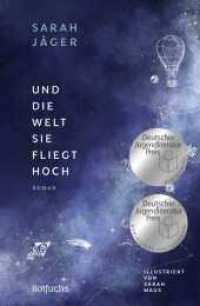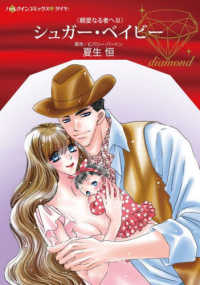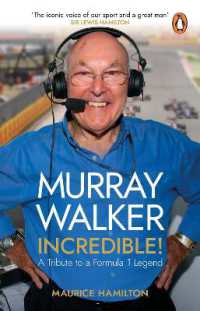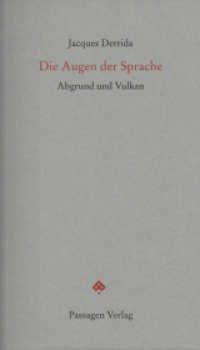- ホーム
- > 洋書
- > 英文書
- > Performing Arts
Full Description
What did Bakhtin think about the theatre? That it was outdated? That is 'stopped being a serious genre' after Shakespeare? Could a thinker to whose work ideas of theatricality, visuality, and embodied activity were so central really have nothing to say about theatrical practice?
Bakhtin and Theatre is the first book to explore the relation between Bakhtin's ideas and the theatre practice of his time. In that time, Stanislavsky co-founded the Moscow Art Theatre in 1898 and continued to develop his ideas about theatre until his death in 1938. Stanislavsky's pupil Meyerhold embraced the Russian Revolution and created some stunningly revolutionary productions in the 1920s, breaking with the realism of his former teacher. Less than twenty years after Stanislavsky's death and Meyerhold's assassination, a young student called Grotowski was studying in Moscow, soon to break the mould with his Poor Theatre. All three directors challenged the prevailing notion of theatre, drawing on, disagreeing with and challenging each other's ideas. Bakhtin's early writings about action, character and authorship provide a revealing framework for understanding this dialogue between these three masters of Twentieth Century theatre.
Contents
Preface
Introduction
Methodology: questions, double-faced images and dialogue
Themes:
Time and Space, Body and Image
Character and Author, Body and Image
Realism and Revolution
Art and Life
How This Book Works
Part I
Chapter 1 -Bakhtin and Theatre
Introduction
i. Early Manuscripts
ii. The Writings of the Bakhtin Circle
iii. Dostoevsky
iv Dialogue in the Novel and in Theatre
v Time, Space and the Chronotope in the Novel and in Theatre
vi. Carnival and Theatre
vii Last Thoughts and Reflections
Bakhtin and Theatre - Some Conclusions
Part II
Introduction to Part II
Texts and Contexts
Bakhtin and Stanislavsky as Thinkers
Concepts in Bakhtin's Early Philosophy
Phenomenology,
Event
Act and Action
Answerability
I and Other
Chapter 2 - Time and Space in Novel and Theatre
Acting from the Centre
Experiencing not Thinking
Given and Created
Given Circumstances
Value, Sense, Meaning
Acts and Tasks
Time and Timing in Performance
Theatrical Space
Conclusion
Chapter 3 - Psychophysical Acting
Introduction
Bakhtin's Body
Face to Face
I and other in Space
To Know the Body, To Value the Body
The Value of the Human Body in History
Stanislavsky's Resistant Body
Internal and External Images
Bakhtin, Stanislavsky and Psychology
Creativity and the subconscious
Chapter 4 - The Actor, Author and Hero
I and other become Author and Hero
Being, Playing and Imaging
Creating the Image of the Character
Who Authors the Character - Writer, Director or Actor?
Stanislavsky, the Playwright and the Play
Working with the Play Script
The Director
The 'Double Life' in Bakhtin and Stanislavsky's Theory
Conclusion: Image and Human Being
Chapter 5 - Meyerhold's Revolution in Theatre
Introduction
i. Meyerhold and Stanislavsky
ii. A Dialogue about Symbolism
iii A Dialogue about Physical Action
'a plasticity which does not correspond to the words'
The actor's work on a role
iv Training the Actor's Body
'The actor's art is the creation of plastic forms in space'
'the route to image and feeling must begin with motion'
'an actor whose natural abilities have been developed by systematic training'
Training, Training, Training
v A Dialogue About the Traditions of Popular Theatre
vi The Grotesque
vii Commedia, The Mask and the Emploi
viii A Theatre without footlights
Chapter 6
Outline of a Career
Grotowski, Stanislavsky, Meyerhold and Bakhtin
Methodology
Grotowski's dialogues with the public
Grotowski's dialogue with actors
The Development of Grotowski's Actor Training
In search of a method
The way toward a Poor Theatre
Overview of Grotowski's Theatre of Productions (1959 - 1969)
Staging the Dialogue between Actor and Audience
Confronting and not illustrating the play
Character
The Actor's Score - in search of true signs
The Actor's Body
Holiday, Carnival, Meeting - Beyond Theatre
From Acting to Action
From Theatre to Meeting
Summary
Conclusion








